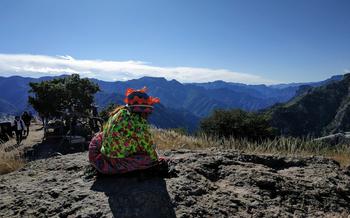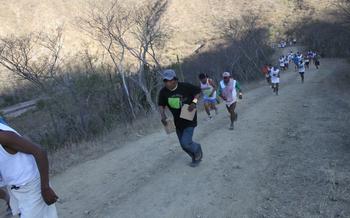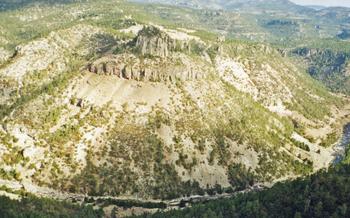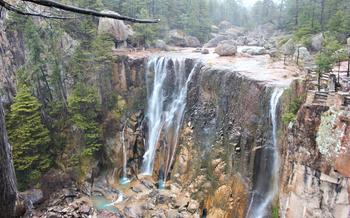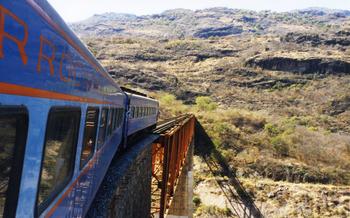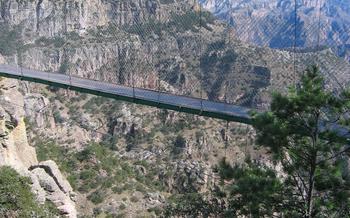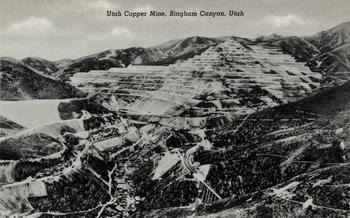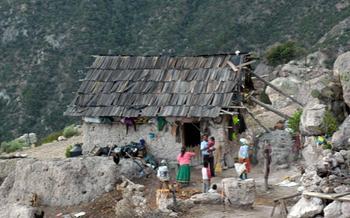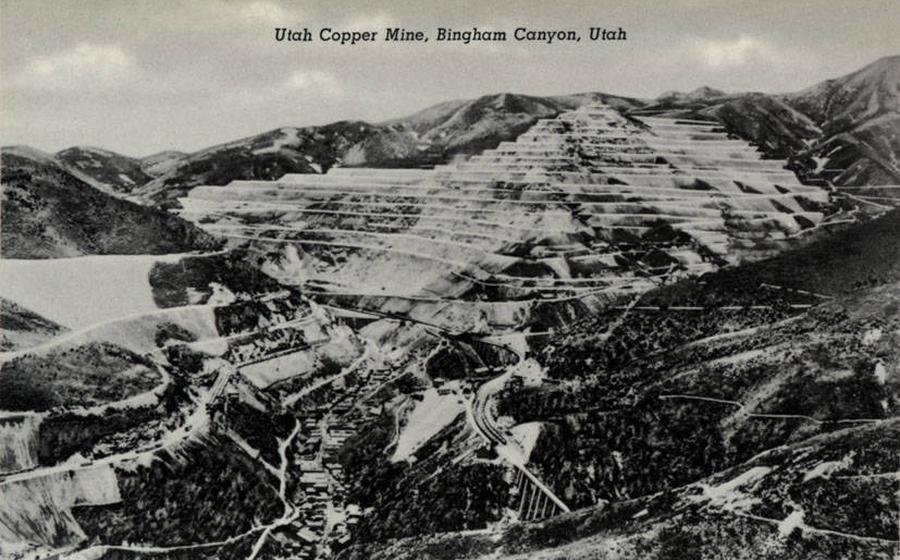
Creel Museum
- A Journey Through Time: Exploring the Creel Museum
- The People of the Mountains: The Rarámuri
- Artifacts and Treasures: A Glimpse into Rarámuri Life
- The Art of Storytelling: Murals and Paintings
- Religious Beliefs and Practices: A Sacred Connection
- The Copper Canyon Connection: A Natural and Cultural Wonder
- Interactive Exhibits: A Hands-On Experience
- Guided Tours: A Deeper Understanding
- The Creel Mission: A Legacy of Faith
- Local Cuisine: A Taste of Rarámuri Flavors
- Cultural Festivals and Events: A Celebration of Life
- Sustainable Tourism: Respecting the Land and People
- Photography Tips: Capturing the Essence of Creel
- Language and Communication: Bridging the Gap
- Insider Tip: Exploring Beyond the Museum
A Journey Through Time: Exploring the Creel Museum
In the heart of the Copper Canyon, nestled amidst towering mountains and lush forests, lies a treasure trove of cultural heritage—the Creel Museum. This remarkable institution invites visitors to embark on a captivating journey through the past, present, and traditions of the Rarámuri people, the indigenous guardians of this majestic land.
The Creel Museum stands as a testament to the rich history and vibrant culture of the Rarámuri, showcasing their unique way of life, their struggles, and their triumphs. Located in the picturesque town of Creel, the museum is easily accessible, serving as a gateway to understanding the complexities of this ancient civilization.
For the Rarámuri people, the museum holds immense significance. It is a place where their stories are told, their customs are celebrated, and their identity is preserved. Through interactive exhibits, captivating murals, and poignant artifacts, the museum provides a platform for the Rarámuri to share their perspectives, ensuring that their legacy endures for generations to come.
The People of the Mountains: The Rarámuri
The Rarámuri, also known as the Tarahumara, are an indigenous people who have inhabited the rugged landscapes of the Copper Canyon region for centuries. Their name, which means "runners on foot" in their native language, aptly reflects their reputation for endurance and agility.
With a population of approximately 50,000, the Rarámuri are one of the largest indigenous groups in Mexico. They have managed to preserve their unique traditions and customs despite the challenges of modernity and assimilation.
The Rarámuri have a deep connection to the land and a profound respect for nature. They practice subsistence farming, growing corn, beans, and squash, and they supplement their diet with hunting and gathering. Their traditional clothing, made from woven wool and cotton, is both functional and stylish, reflecting their cultural identity.
The Rarámuri are known for their intricate religious beliefs and practices. They have a complex animist worldview, believing that spirits inhabit all living things and that the natural world is sacred. Their rituals and ceremonies are designed to maintain harmony with the environment and to honor their ancestors.
Artifacts and Treasures: A Glimpse into Rarámuri Life
The Creel Museum not only showcases the Rarámuri people's history and traditions but also offers an up-close look at their exquisite craftsmanship. The museum houses a diverse collection of artifacts and treasures that provide a glimpse into the everyday life and skills of the Rarámuri people.
The museum's textile collection includes a variety of traditional clothing items, such as intricately woven blankets, colorful skirts, and ceremonial headdresses. These textiles not only serve as practical garments but also hold cultural and spiritual significance for the Rarámuri. Their vibrant colors and intricate designs reflect the creativity and artistry of this indigenous community.
In addition to clothing, the museum displays various tools, weapons, and hunting equipment used by the Rarámuri. These include bows and arrows, spears, and knives, which were essential for hunting and providing sustenance for the community. Each tool is meticulously crafted and designed to meet the specific needs of the Rarámuri lifestyle.
The museum also features a collection of pottery, baskets, and other handicrafts. These objects showcase the Rarámuri's mastery of traditional crafts. The pottery is renowned for its distinctive shapes and intricate patterns, while the baskets are skillfully woven using natural fibers. These handicrafts not only have practical uses but also serve as expressions of cultural identity and creative expression.
Exploring the collection of artifacts and treasures at the Creel Museum is like stepping into a time capsule, offering visitors a tangible connection to the rich cultural heritage of the Rarámuri people.
The Art of Storytelling: Murals and Paintings
Murals and paintings play a significant role in Rarámuri culture, serving as visual narratives that convey stories, legends, and beliefs. These artworks are often found in public spaces, such as community centers, schools, and churches, and are created by local artists using traditional techniques and materials.
The murals and paintings depict a variety of subjects, including scenes from daily life, historical events, and religious stories. They are characterized by their vibrant colors, intricate designs, and symbolic imagery. Each element in a mural or painting holds meaning, representing aspects of Rarámuri culture, history, and spirituality.
One of the most common motifs in Rarámuri art is the deer, which is considered a sacred animal and a symbol of strength, agility, and fertility. Deer are often depicted in hunting scenes, surrounded by mountains, forests, and rivers, reflecting the close relationship between the Rarámuri and their natural environment.
Another important symbol in Rarámuri art is the corn plant, which represents life, sustenance, and abundance. Corn is a staple crop in the Rarámuri diet, and its cultivation and harvest are celebrated through various rituals and ceremonies. Murals and paintings often depict cornfields, farmers tending to their crops, and women grinding corn into flour.
The murals and paintings in Creel's museum offer a unique glimpse into the rich cultural heritage of the Rarámuri people. They provide valuable insights into their beliefs, traditions, and way of life, and serve as a testament to the creativity and artistry of this remarkable community.
Religious Beliefs and Practices: A Sacred Connection
The Rarámuri people hold a deep connection to the spiritual realm, believing in animism, where spirits reside in all living things and natural phenomena. Their beliefs are centered around the concept of balance and harmony with the environment, with rituals and ceremonies performed to honor and appease these spirits. Traditional festivals, such as the Matachin dance, showcase their vibrant culture and religious practices. Despite the influence of Christianity in the region, the Rarámuri have maintained their unique beliefs, often blending Catholic elements with their own traditions, creating a unique syncretic form of spirituality.
The Copper Canyon Connection: A Natural and Cultural Wonder
The Creel Museum stands as a testament to the deep connection between the Rarámuri people and the awe-inspiring landscapes that surround them. Nestled in the heart of the Copper Canyon, the museum offers a glimpse into the symbiotic relationship between the Rarámuri and their natural environment.
For centuries, the Rarámuri have called these rugged canyons home, navigating its steep cliffs and hidden valleys with an innate understanding of the land. The Copper Canyon, known locally as Barrancas del Cobre, is a system of six canyons that rival the Grand Canyon in size and grandeur. Formed by the relentless flow of the Urique River over millions of years, these canyons showcase a diverse array of ecosystems, from lush forests to arid desert landscapes.
The Rarámuri have adapted to the challenges and opportunities presented by this diverse terrain. They have developed a deep understanding of the local flora and fauna, utilizing plants for food, medicine, and shelter, and hunting game for sustenance. The canyons also provide a source of water for irrigation and drinking, as well as a network of trails for transportation and trade.
Today, ecotourism is emerging as a sustainable way to support the local economy and protect the natural wonders of the Copper Canyon. Visitors can embark on guided hikes, bike rides, or mule treks, exploring the canyons' hidden waterfalls, ancient cave paintings, and breathtaking viewpoints. By embracing responsible tourism practices, travelers can contribute to the preservation of this unique cultural and natural heritage while fostering economic development in the region.
Interactive Exhibits: A Hands-On Experience
The Creel Museum offers a range of interactive exhibits that allow visitors to delve deeper into Rarámuri culture and traditions. Engaging displays invite visitors to try their hand at traditional Rarámuri games, such as "rarajípari", a dexterity game involving tossing and catching small wooden balls, or "rarámuri footrace", a test of speed and agility. Interactive touchscreens provide in-depth information on Rarámuri history, beliefs, and way of life. Educational programs and workshops are regularly organized, offering hands-on experiences such as learning traditional crafts, cooking Rarámuri dishes, or participating in traditional dances. These interactive elements not only enhance the museum experience but also foster a deeper understanding and appreciation for the unique heritage of the Rarámuri people.
Guided Tours: A Deeper Understanding
To fully immerse yourself in the rich tapestry of Rarámuri culture and traditions, consider exploring the museum with a knowledgeable local guide. Guided tours are offered in various languages, ensuring that visitors from around the world can gain a deeper understanding of the exhibits. These guides, often members of the Rarámuri community themselves, provide firsthand insights into the history, culture, and traditions of their people. They share stories, anecdotes, and personal experiences that bring the museum's artifacts and displays to life. With a guided tour, you'll uncover the hidden meanings behind the intricate artwork, learn about the significance of various rituals and ceremonies, and gain a deeper appreciation for the challenges and triumphs of the Rarámuri people.
The Creel Mission: A Legacy of Faith
In the heart of Creel, nestled amidst the majestic mountains of the Sierra Madre Occidental, stands a testament to the enduring power of faith: the Creel Mission. Founded in the late 17th century by Jesuit missionaries, this historic landmark played a pivotal role in the spread of Catholicism and the cultural transformation of the region.
The mission's striking architecture, a blend of Baroque and Neoclassical styles, reflects the fusion of European and indigenous influences that shaped Creel's unique identity. Its towering bell tower, adorned with intricate carvings, beckons visitors from afar, inviting them to explore the rich history and spiritual legacy enshrined within its walls.
Beyond its architectural grandeur, the Creel Mission holds profound significance for the local Rarámuri community. For centuries, it has served as a gathering place for religious ceremonies, festivals, and community events, fostering a deep sense of belonging and cultural continuity. Even today, the mission remains a vibrant hub of spiritual activity, drawing worshippers from far and wide to celebrate their faith and connect with their ancestors.
Stepping inside the mission, visitors are transported back in time to an era of devotion and transformation. The walls are adorned with beautiful murals depicting scenes from the Bible and the lives of the saints, each brushstroke carrying a message of hope, redemption, and divine guidance.
The Creel Mission is not merely a historical site but a living testament to the enduring power of faith. It stands as a reminder of the deep spiritual roots that have shaped the identity of this extraordinary region, inviting visitors to delve into the rich tapestry of religious traditions that have woven together the fabric of Creel's vibrant cultural heritage.
Local Cuisine: A Taste of Rarámuri Flavors
In the heart of the Copper Canyon, the Rarámuri people have cultivated a rich culinary tradition deeply rooted in their connection to the land. Their diet revolves around the "three sisters": corn, beans, and squash, which are combined to create hearty and nutritious dishes. Corn, in particular, holds a sacred place in Rarámuri culture, symbolizing life and sustenance.
Traditional Rarámuri dishes often feature corn tortillas, which are made using a time-honored process of grinding corn kernels and cooking them on a comal, a flat griddle. These tortillas are then filled with a variety of ingredients, including beans, squash, and chili peppers, to create simple yet flavorful tacos.
Another staple of the Rarámuri diet is pinole, a toasted cornmeal that can be eaten dry or mixed with water to create a nourishing drink. Pinole is often consumed on long journeys or during agricultural work, providing a quick and energy-packed snack.
For special occasions, the Rarámuri prepare elaborate dishes such as pozole, a hearty stew made with corn, meat, and chili peppers, and menudo, a traditional Mexican soup made with tripe and hominy. These dishes are often shared communally, reflecting the strong sense of community and togetherness that permeates Rarámuri culture.
Visitors to Creel have the opportunity to sample these traditional Rarámuri dishes at local restaurants and markets. By savoring the flavors of the Copper Canyon, travelers can gain a deeper understanding of the Rarámuri way of life and their deep connection to the land.
Cultural Festivals and Events: A Celebration of Life
The Rarámuri people have a rich cultural heritage that is celebrated through various festivals and events throughout the year. These vibrant gatherings offer a unique opportunity to witness traditional dances, music, and performances that showcase the unique identity of the Rarámuri community.
One of the most significant festivals is the Matachin Dance, held during Lent. This colorful and energetic dance is performed by men wearing elaborate costumes and masks, accompanied by rhythmic music and storytelling. The Matachin Dance is a celebration of life, fertility, and the coming of spring.
Another important event is the Feast of San Juan, held on June 24th. This festival honors the patron saint of Creel and features traditional music, dancing, and processions. The Rarámuri people gather to pay homage to San Juan and seek his blessings for the coming year.
Cultural festivals and events are not only a time for celebration but also an opportunity for the Rarámuri people to share their culture with visitors. These gatherings provide a platform for cultural exchange, where visitors can learn about the unique traditions, customs, and beliefs of the Rarámuri.
Participating in cultural festivals and events is an enriching experience that allows visitors to immerse themselves in the vibrant culture of the Rarámuri people. Whether it's witnessing the Matachin Dance, celebrating the Feast of San Juan, or simply enjoying traditional music and performances, these events offer a glimpse into the heart and soul of the Rarámuri community.
Sustainable Tourism: Respecting the Land and People
The Copper Canyon region has experienced a surge in tourism in recent years, bringing both economic benefits and challenges. As responsible travelers, it is crucial to minimize our environmental impact and respect the local culture. Supporting local businesses and initiatives is essential, as it ensures that the benefits of tourism are shared equitably. By choosing accommodations and tour operators that prioritize sustainability, we can help preserve the natural beauty and cultural heritage of the region. It is also important to be culturally sensitive and respectful of Rarámuri traditions and customs. Asking permission before taking photographs, avoiding intrusive behavior, and refraining from touching or handling sacred objects are simple ways to show our respect for the local way of life. Embracing sustainable tourism practices ensures that future generations can continue to enjoy the wonders of the Copper Canyon while preserving its unique cultural identity.
Photography Tips: Capturing the Essence of Creel
Creel and the Copper Canyon offer photographers a wealth of stunning subjects, from the rugged landscapes and dramatic cliffs to the vibrant culture of the Rarámuri people. Here are a few tips for capturing the essence of Creel through your lens:
-
Golden Hours: The best time to take photos in Creel is during the golden hours, just after sunrise and just before sunset. The warm, soft light during these times creates a magical glow that enhances the beauty of the scenery.
-
Camera Settings: Use a wide-angle lens to capture the vastness of the canyons and landscapes. For portraits of the Rarámuri people, a 50mm or 85mm lens is a good choice. Experiment with different shutter speeds to create a sense of movement or to freeze action.
-
Respect: When photographing the Rarámuri people, always ask for permission first. Be respectful of their privacy and customs. Remember that they are not just subjects for your photos but real people with their own stories and traditions.
Language and Communication: Bridging the Gap
Navigating a foreign country can be challenging, especially when there is a language barrier. In Creel, Spanish is the predominant language, and while many locals may have basic English skills, it's helpful to have some Spanish phrases up your sleeve.
Common greetings and expressions like "Hola" (Hello), "Gracias" (Thank you), and "Por favor" (Please) go a long way in showing respect and initiating conversations.
Learning a few essential phrases related to directions, prices, and simple inquiries can also be beneficial. Don't be afraid to use hand gestures and body language to convey your message.
If you're struggling to communicate, don't hesitate to ask for help from hotel staff, tour guides, or fellow travelers. English-speaking guides are available for hire, and they can provide invaluable insights into the local culture and history.
Remember, communication is a two-way street, and the Rarámuri people are generally friendly and welcoming. A genuine smile and a willingness to learn about their culture can bridge any language gap.
Insider Tip: Exploring Beyond the Museum
While the Creel Museum offers a comprehensive insight into the Rarámuri culture, venturing beyond its walls reveals even more hidden gems and lesser-known spots. For adventurous travelers seeking off-the-beaten-track experiences, Creel offers a plethora of opportunities. Embark on a scenic hike through the surrounding mountains, marveling at the breathtaking views of the Copper Canyon. Discover secluded waterfalls and pristine natural pools, perfect for a refreshing dip. Explore the vibrant local markets, where you can bargain for handmade crafts, fresh produce, and traditional Rarámuri delicacies. Take a bike ride through the picturesque countryside, passing by traditional Rarámuri villages and interacting with the warm and welcoming locals. Whether you prefer cultural immersion, outdoor adventures, or simply soaking in the beauty of the region, Creel has something to offer every traveler.
